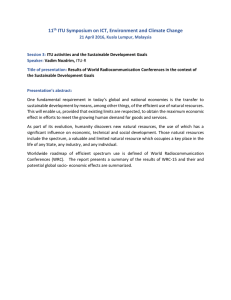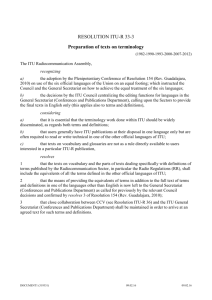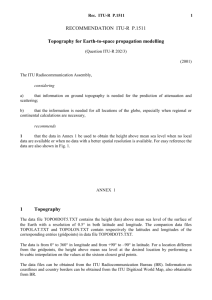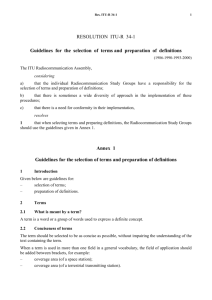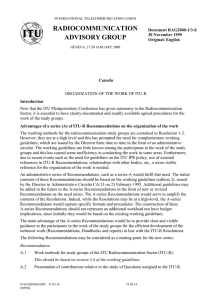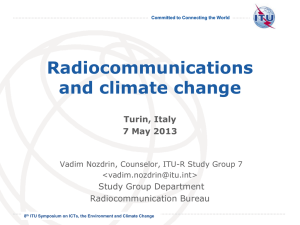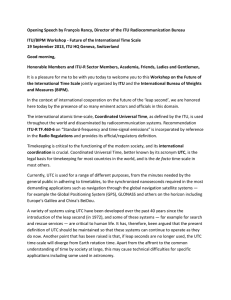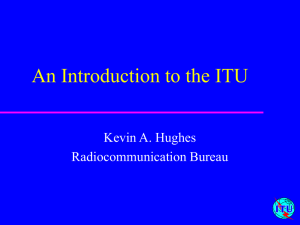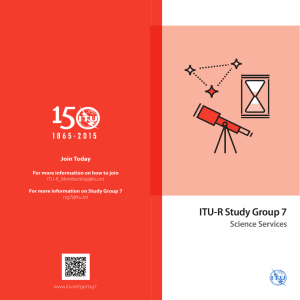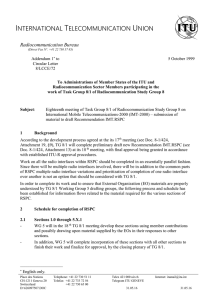3 Definitions
advertisement
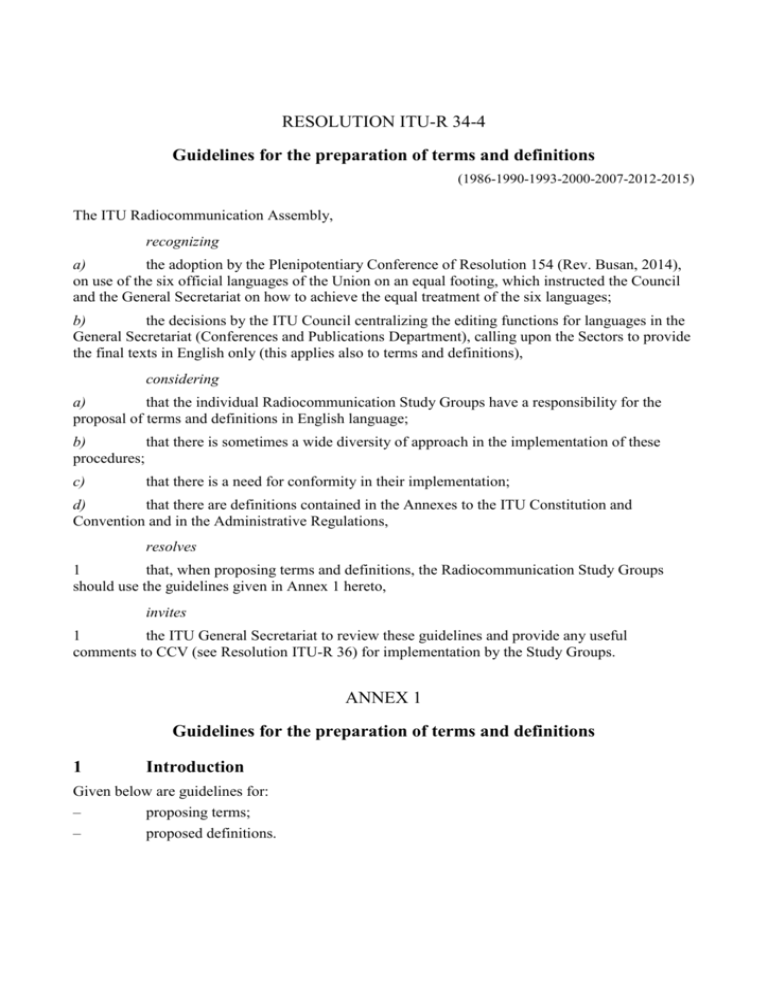
RESOLUTION ITU-R 34-4 Guidelines for the preparation of terms and definitions (1986-1990-1993-2000-2007-2012-2015) The ITU Radiocommunication Assembly, recognizing a) the adoption by the Plenipotentiary Conference of Resolution 154 (Rev. Busan, 2014), on use of the six official languages of the Union on an equal footing, which instructed the Council and the General Secretariat on how to achieve the equal treatment of the six languages; b) the decisions by the ITU Council centralizing the editing functions for languages in the General Secretariat (Conferences and Publications Department), calling upon the Sectors to provide the final texts in English only (this applies also to terms and definitions), considering a) that the individual Radiocommunication Study Groups have a responsibility for the proposal of terms and definitions in English language; b) that there is sometimes a wide diversity of approach in the implementation of these procedures; c) that there is a need for conformity in their implementation; d) that there are definitions contained in the Annexes to the ITU Constitution and Convention and in the Administrative Regulations, resolves 1 that, when proposing terms and definitions, the Radiocommunication Study Groups should use the guidelines given in Annex 1 hereto, invites 1 the ITU General Secretariat to review these guidelines and provide any useful comments to CCV (see Resolution ITU-R 36) for implementation by the Study Groups. ANNEX 1 Guidelines for the preparation of terms and definitions 1 Introduction Given below are guidelines for: – proposing terms; – proposed definitions. 2 2 Terms 2.1 What is meant by a term? A term is a word or a group of words used to express a definite concept. 2.2 Conciseness of terms The term should be selected to be as concise as possible, without impairing the understanding of the text containing the term. When a term is used in more than one field in a general vocabulary, the field of application may be added between brackets if justified, for example: – coverage area (of a space station); – coverage area (of a terrestrial transmitting station). 2.3 Ambiguous terms The occurrence of terms with more than one meaning is occasionally inevitable. When one term has several meanings, confusion can arise in the following cases: – the meanings are very similar; – the terms appearing in the same text with different meanings. In such cases different terms should be found to express the different meanings of such ambiguous terms. 2.4 Complex terms A complex term should reflect the combination of concepts included in the definition. However, it need not include every constituent of the combination of concepts shown in the definition. Care should be taken to avoid the unnecessary proliferation of terms and definitions where an already-defined qualifying term, used in conjunction with a simpler term, would suffice. 3 Definitions 3.1 What is meant by definition? To define is to state clearly, accurately and precisely what is a concept. This should preferably be done in one sentence, expressing exactly the meaning of the term used to designate the concept. A definition should describe the concept fully and contain sufficient data for the concept to be perfectly understood and its limits properly identified. The definition must be simple, clear and relatively brief. If appropriate, additional information should be in the form of notes. 3.2 Use of terms in definitions The following general principles may be adopted for the terms used in a definition: – all the terms which appear in a definition must either be well known or defined elsewhere in the text, – the term or terms representing a concept to be defined should not appear in the definition, – the meaning of a term must not be expressed using another term which is itself defined by means of the first term. 3 3.3 Accuracy of definitions The degree of accuracy of definitions may depend on their intended use. Attempts to achieve greater accuracy may lengthen the text unnecessarily. This may involve the use of more specific and hence less familiar terms, thereby making the definition harder rather than easier to understand. 3.4 Changes to, or limitation of, generally accepted terms No attempt should be made to modify or limit the established usage of a term, unless the use of the existing terms causes confusion or ambiguity. In this case the use of the term may be deprecated. When certain general terms are used in a restricted sense in the telecommunications fields, the definition should include an indication of this constraint. 3.5 Formulation of definitions The wording of the definition should clearly indicate whether the term is a substantive noun, a verb or an adjective. 3.6 Incomplete definitions Care should be taken not to omit the specific characteristics of a term in its definition. Such definitions are incomplete. The term and its definition should be interchangeable. 3.7 Definitions with more than one term Where more than one term applies to the same concept, the alternative term(s) may also be mentioned (separated by a semicolon), to the extent that this does not cause confusion. 3.8 Illustrations Illustrations can often be used to clarify or explain a definition. The type of illustration used will depend on each specific case; an example of a graphical depiction of terms used in the transmission loss concept can be seen in Recommendation ITU-R P.341. 3.9 Further use of terms and definitions It should be borne in mind that it may be useful later to include a definition in a dictionary and, in this case, it would be valuable if the definition were fully comprehensible even when taken out of context. It could then be included in the dictionary without amendment. 4 Further references For further and more specific guidance on the drafting of terms and definitions, reference may be made to ISO International Standard 704 “Terminology work – Principles and methods” (2009), and any relevant update of these principles as well as any principles adopted by any other recognized organizations by ITU for such purposes.
